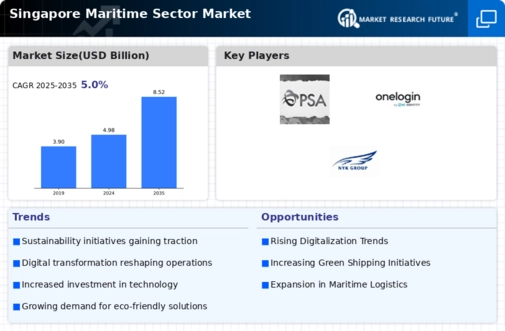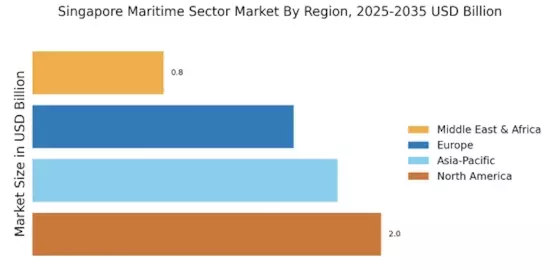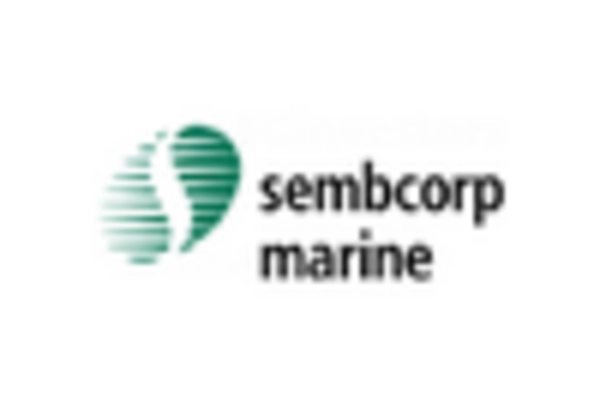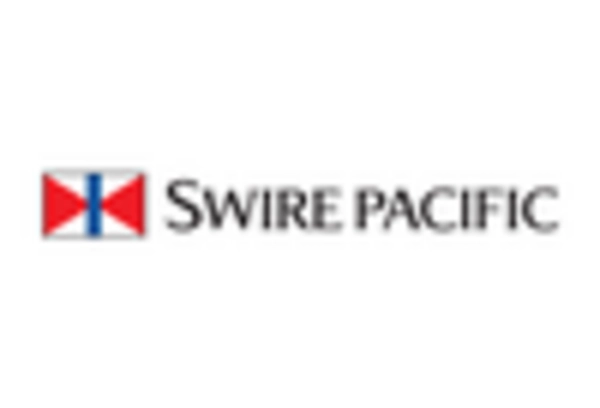Strategic Location
The Singapore Maritime Sector Market benefits immensely from Singapore's strategic geographical position along major shipping routes. This advantageous location facilitates efficient maritime trade, making it a preferred hub for shipping and logistics. Approximately 80% of the world's shipping traffic passes through the Strait of Malacca, underscoring Singapore's pivotal role in global maritime operations. The port of Singapore is one of the busiest in the world, handling over 37 million TEUs (Twenty-foot Equivalent Units) in 2023. This high volume of container traffic not only enhances the operational capabilities of the Singapore Maritime Sector Market but also attracts international shipping companies seeking to optimize their supply chains. As a result, the sector is poised for continued growth, driven by its strategic importance in global trade.
Regulatory Framework
The regulatory framework governing the Singapore Maritime Sector Market plays a crucial role in shaping its operational landscape. The Maritime and Port Authority of Singapore (MPA) implements stringent regulations that ensure safety, security, and environmental sustainability. These regulations are designed to align with international standards, fostering a safe maritime environment. In 2023, the MPA introduced new initiatives aimed at reducing carbon emissions from shipping activities, reflecting a commitment to sustainability. Such regulatory measures not only enhance the reputation of the Singapore Maritime Sector Market but also attract environmentally conscious shipping companies. As regulations evolve, the industry is likely to adapt, ensuring compliance while maintaining operational efficiency.
Sustainability Initiatives
Sustainability initiatives are increasingly influencing the Singapore Maritime Sector Market, as stakeholders recognize the importance of environmental stewardship. The industry is actively pursuing strategies to reduce its carbon footprint and enhance energy efficiency. In 2023, the Singapore Maritime Sector Market saw a rise in the adoption of green technologies, with investments in eco-friendly vessels and renewable energy sources. The government has also introduced incentives for companies that implement sustainable practices, further encouraging the transition towards greener operations. This focus on sustainability not only aligns with The Singapore Maritime Sector Industry as a forward-thinking leader in maritime practices. As sustainability becomes a priority, the industry is likely to attract investment and talent committed to innovative solutions.
Technological Advancements
Technological advancements are reshaping the Singapore Maritime Sector Market, driving efficiency and innovation. The adoption of automation, artificial intelligence, and data analytics is becoming increasingly prevalent in maritime operations. For instance, the implementation of smart port technologies has led to enhanced operational efficiency, reducing turnaround times for vessels. In 2023, investments in maritime technology reached approximately SGD 1.5 billion, reflecting a growing trend towards digitalization. These advancements not only streamline operations but also improve safety and environmental sustainability within the sector. The Singapore Maritime Sector Market is likely to continue embracing these technologies, positioning itself as a leader in maritime innovation and enhancing its competitive edge on the international stage.
Investment in Infrastructure
Investment in infrastructure is a key driver of growth within the Singapore Maritime Sector Market. The government has committed substantial resources to enhance port facilities, expand terminals, and improve connectivity. In 2023, the Singapore government allocated SGD 2 billion for port infrastructure development, aimed at increasing capacity and efficiency. This investment is expected to support the anticipated growth in container traffic and bolster Singapore's position as a leading maritime hub. Enhanced infrastructure not only facilitates smoother operations but also attracts foreign investment, further stimulating the Singapore Maritime Sector Market. As infrastructure continues to improve, the sector is likely to experience increased competitiveness and resilience in the face of evolving market demands.


















Leave a Comment